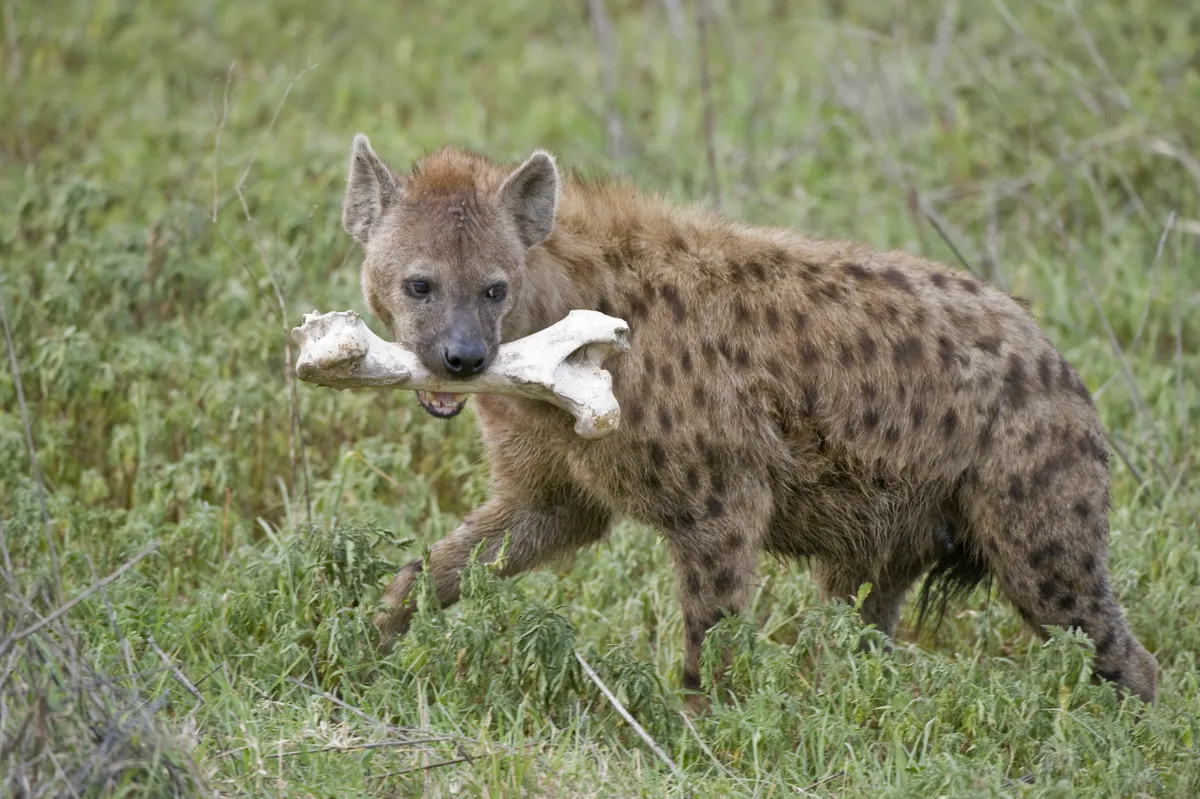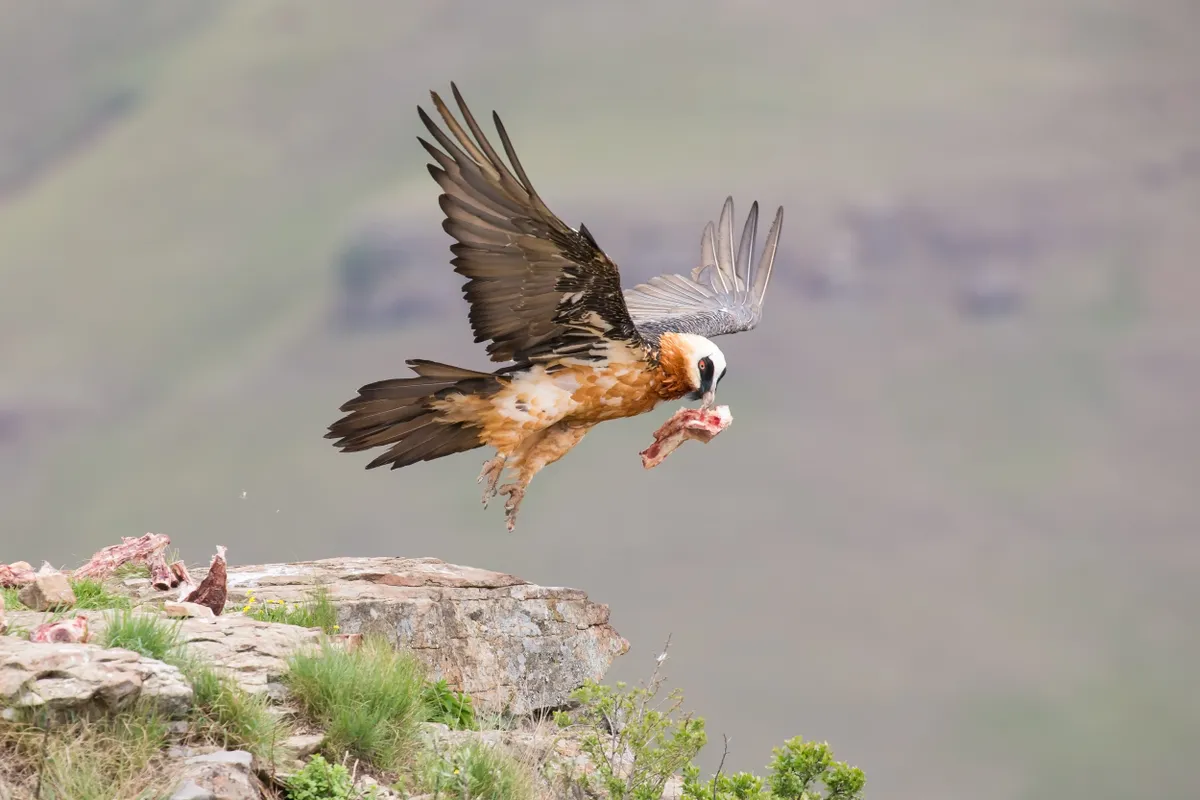There are some bizarre dietary specialisms in the animal kingdom, but eating bone is still relatively unusual.
Hyenas are famed for their bone-cracking jaws and ability to eat everything, bones and all, but bone only counts for a small part of their diet, while polychaete worms in the genus Osedax digest the fat and bone of dead whales worldwide.

The true ‘bone eaters’ though are the lammergeiers (also known as bearded vultures). These vultures have behavioural and anatomical adaptations that allow a diet of up to 90 per cent bone.
Able to carry bones that weigh half as much as they do, the birds fly up using thermals and drop them from a great height, smashing them on rocks below – a skill that can take seven years to master.
An extra-long intestinal tract helps the lammergeiers digest bone, as does their gastric acid, which has a pH of about 0.7, close to pure hydrochloric acid.

In addition many herbivore species, including giraffes, practise osteophagia, in which they chew bones to obtain crucial minerals that are missing from their regular plant diet, such as calcium and phosphate.
Do you have a wildlife question you’d like answered? Email your question to wildquestions@immediate.co.uk or post it to Q&A, BBC Wildlife Magazine, Immediate Media Company, Eagle House, Bristol, BS1 4ST.
